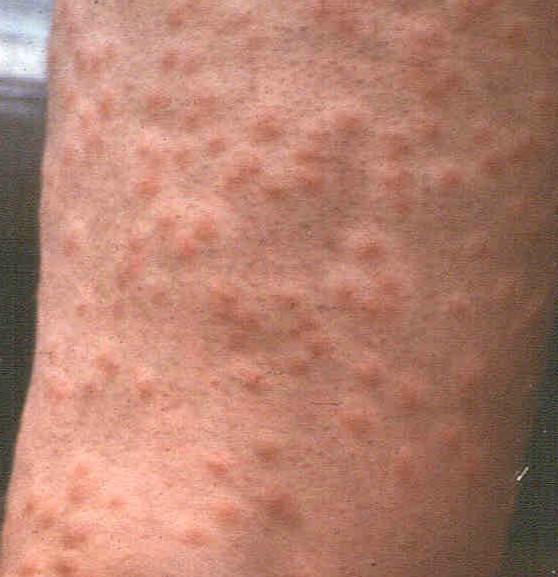TRANSMISSION OF THE DISEASE
While looking for a host, mature shistosomes can mistake a swimmer and get into their skin. The larvae enter through the swimmer's pores as the water evaporates. These parasites cannot survive in human bodies, so they die almost immediately; it is the allergic reaction that causes this itch. This allergy can last from two to fourteen days, this is not contagious or dangerous but scratching the itch could cause an infection.
SYMPTOMS
Swimmers can feel the first symptoms as soon as they get out of the water, when the person starts drying off, the larvae starts burrowing into the skin, this causes a tingling feeling. The next stage is the appearance of red spots (the size of a pin head), the quantity depending of how many larvae got onto the skin. After several hours, the tingling feeling will disappear, the spots will enlarge and the skin will feel very itchy (as an insect bite). The itch will gradually get worse. Each person reacts differently, depending on sensitivity, degree of exposure. If a person had prior exposure their body reacts stronger becoming more sensitive.
TREATMENT / FIRST AID
The BC Ministry of Health recommends:
Do not scratch the skin
Take a bath with 3 tablespoon of baking soda in lukewarm water.
Apply calamine lotion on the red spots
Take antihistamines
Apply cool compresses on the itchy spots
Take colloidal oatmeal baths
AVOIDING SWIMMER'S ITCH
Check if there are cases of swimmer's itch reported before heading to a lake, or check for warning signs on the beach.
If possible, take a shower after coming out of the water and dry yourself off briskly, if not, towel down briskly as soon as you leave the water.
Avoid beaches with a large number of aquatic plants, which can be an ideal habitat for water-snails and schistosomes.


